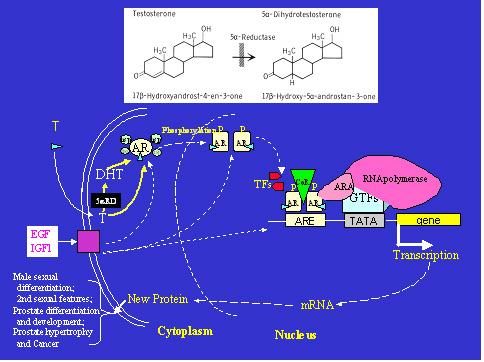Figure 2.

Illustrations of the molecular events of androgen-AR action in a target cell, and the 5α-reductase action. When testosterone (T) enters the cell, it can be converted to dihydrotestosterone (DHT) in the cell by 5α-reductases (5αRD) (top panel). Both T and DHT bind to androgen receptor (AR), resulting in a conformational change in AR and translocation of the receptor complex to nucleus. This complex interacts with androgen response element (ARE) on the target gene, and regulates gene expression in concert with co-regulators (CoR), transcription factors (TF) and the general transcription complex. The changes in androgen-target proteins in the cell eventually affect cellular structure and function related to male sexual differentiation, physiology, and pathophysiology. The function of AR can be activated or modified by non-ligand factors such as growth factors, EGF and IGF-1. GTFs – general transcription factors; ARA – androgen receptor associated proteins; P- phosphorylation; TFs – transcription factors; hsp – heat shock protein.
